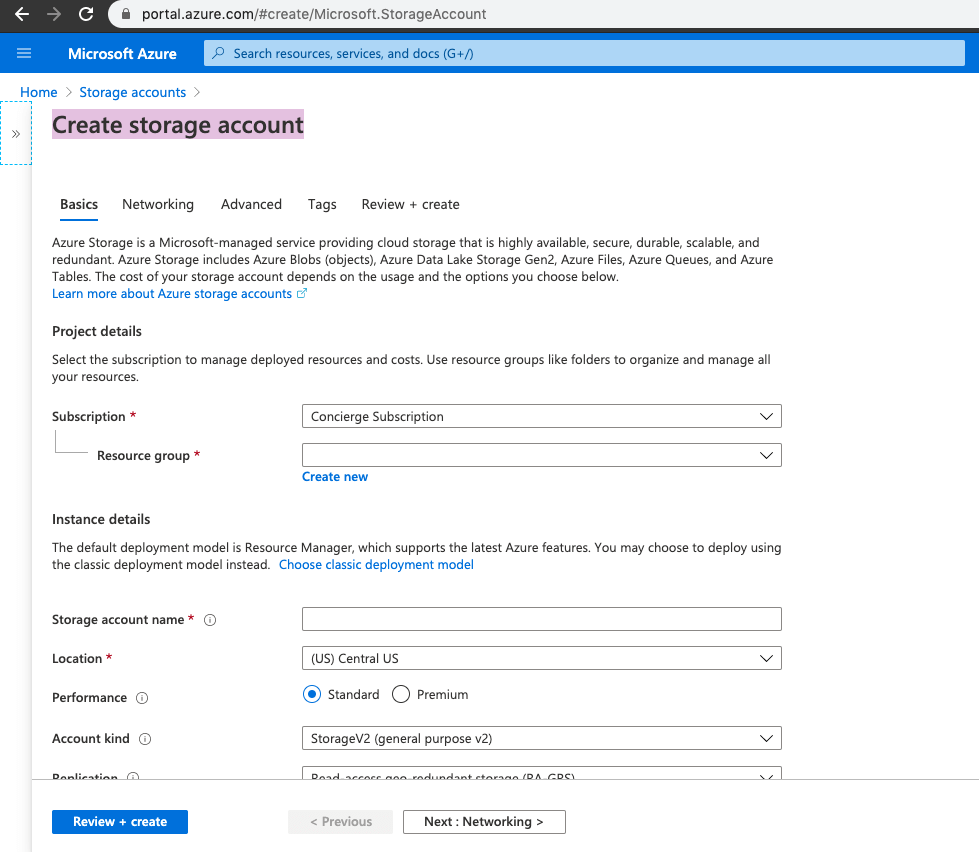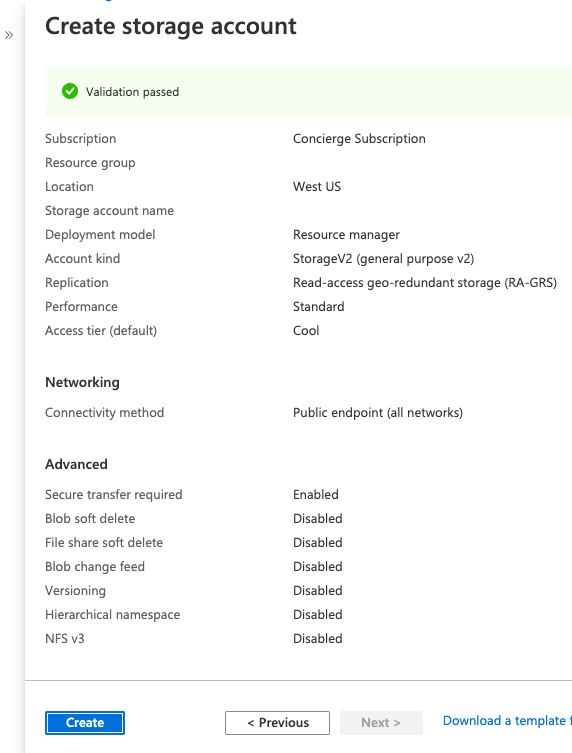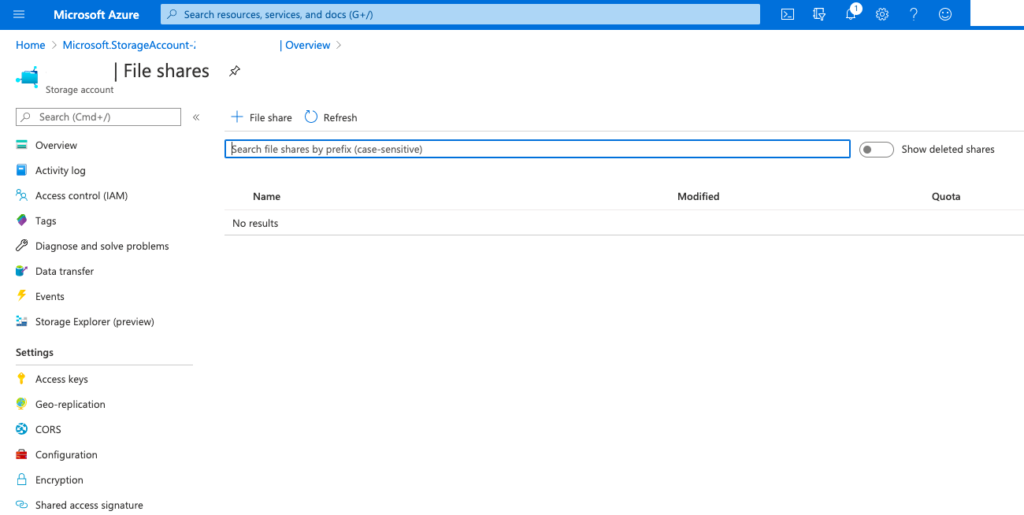Welcome to the world of Azure File Storage! In this blog post, we’ll unravel the magic of Microsoft’s cloud-based storage service that brings simplicity, scalability, and security to your file management needs. Whether you’re a tech enthusiast, a developer, or a seasoned IT professional, Azure File Storage offers a seamless solution to store and share your files with ease.
Imagine a storage system that’s highly available, durable, and fully managed – that’s Azure File Storage! From small businesses to large enterprises, this platform empowers users to access their files from anywhere in the world, fostering collaboration and productivity.
So, let’s dive in and explore the world of Azure File Storage!
Table of Contents
What is Azure File Storage?
Azure File Storage is a cutting-edge cloud-based storage service offered by Microsoft Azure. It serves as a highly reliable, fully managed solution designed to cater to your file storage and sharing needs in the cloud. With its seamless integration into the Azure ecosystem, Azure File Storage empowers users to store, access, and manage their files effortlessly.
At its core, Azure File Storage provides a robust, scalable, and redundant storage system that ensures your data is safe and always available. Whether you are a small business or a large enterprise, this versatile storage service accommodates various file types, from documents and images to application data.

Azure File Storage utilizes the Server Message Block (SMB) protocol, making it accessible from Windows, macOS, and Linux machines, thus offering unparalleled flexibility for different platforms. Additionally, it supports the Network File System (NFS) protocol, allowing Linux clients to access file shares with ease.
With Azure File Storage, you can enjoy the benefits of a fully managed service without worrying about the hardware or operating system. Microsoft handles all the critical aspects of maintenance and security, leaving you free to focus on your core business operations.
Also Check: Our blog post on Azure Storage
Azure File Storage Components
Azure File Storage consists of several key components that work together to provide a comprehensive storage solution. Let’s explore each of these components:
Azure Storage Account
The Azure Storage Account is the foundation of Azure File Storage. It serves as the gateway for accessing various storage objects within the Azure ecosystem. With a unique name and global accessibility, a storage account acts as a central hub for managing resources such as Queues, Blobs, Tables, Files, and disks. It offers configurable options and ensures that storage limitations are distributed across all storage services, providing a seamless experience.
Azure Storage Shares
Azure Storage Shares utilize the widely adopted Server Message Block (SMB) protocol to facilitate file sharing within Azure File Storage. An Azure Storage Share is a container that holds files and directories, enabling users to organize their data efficiently. Each Azure Storage Account can accommodate an unlimited number of shares, and each share can contain multiple files. By leveraging SMB, users can easily create, upload, and manage files and directories within their designated storage shares.
Azure Directory
Azure Directory plays a crucial role in organizing files and directories within Azure File Storage. It provides a hierarchical structure that categorizes data based on specific categories such as documents, logs, or media-related files. This categorical directory hierarchy ensures efficient data management, enabling users to locate and access files with ease.
Files
Files are the heart of Azure File Storage. They encompass various formats, including text files, CSV files, images (such as JPEG or PNG), and application files. Azure File Storage supports identity-based authentication over the SMB protocol, ensuring secure access to files. Whether you’re working with textual data or multimedia content, Azure File Storage accommodates a wide range of file types, making it a versatile solution for diverse storage needs.
URL Format
When accessing Azure File Storage through the REST protocol, a specific URL format must be followed. The URL should be structured as follows: “https://.file.core.window.net///”.
This URL format ensures that requests are properly routed to the desired Azure share, directory, and file. By adhering to this format, users can seamlessly interact with their files using the REST API and perform various operations like uploading, downloading, or modifying files programmatically.
Understanding the key components of Azure File Storage is vital to harnessing its full potential.
Check Out: Our blog post on Azure Blob Storage
Azure File Storage Data Access Methods
Direct Cloud Access
Direct Cloud Access is a convenient method to access Azure File Storage from various machines or servers. With this approach, you can effortlessly mount Azure file shares on Windows, macOS, or Unix platforms. Azure File Storage leverages the Service Message Block (SMB) protocol and REST API, allowing seamless integration with existing applications. The best part is that you don’t need a separate NAS device or file server since Azure File Storage is serverless. This eliminates the need for managing software patches and simplifies file management.
To ensure compatibility, make sure the SMB client version is 2.1 or higher when mounting Azure file shares on your on-premises workstation or data center. Enjoy the flexibility and simplicity of direct cloud access to Azure File Storage.
Azure File Sync
Azure File Sync enables you to replicate your file shares on both on-premises servers and Azure Windows platforms. This powerful feature centralizes your organization’s files in Azure Files, providing low-latency access, flexibility, and compatibility with on-premises file servers.
Using Azure File Sync, you can access the file shares through the familiar SMB or NFS protocols using Azure Windows Server. The synchronization process ensures that frequently accessed data is kept at the endpoint, while rarely accessed data resides in Azure File Storage. This intelligent caching strategy optimizes access performance, allowing you to work seamlessly with your files. Embrace Azure File Sync and enjoy the benefits of synchronized and high-performance file access.
Also Read: Our blog post on Azure Table Storage
Benefits of Azure File Storage
Easy to use
Azure File Storage prides itself on its user-friendly nature. Once an Azure file share is mounted on your computer, accessing the data becomes a breeze. There’s no need for any special configurations or complex procedures. Simply navigate to the path where the file share is mounted, and you can open, modify, or manage your files effortlessly. With its intuitive interface, Azure File Storage ensures a seamless user experience for both beginners and experienced users alike.
Shared access
One of the significant advantages of Azure File Storage is its ability to provide shared access to file systems. With Azure File Storage, you can seamlessly replace your on-premises file shares without worrying about application compatibility. This shared access allows multiple machines, applications, and instances to access the same file system concurrently. Collaboration becomes a breeze as team members can work together, accessing and modifying files in real-time, boosting productivity and efficiency.
Fully managed
Azure File Storage takes the burden of managing hardware and operating systems off your shoulders. It is a fully managed service provided by Microsoft, meaning you don’t have to worry about server maintenance, hardware upgrades, or security patches. Microsoft takes care of all these aspects, ensuring that your files are stored securely, and the storage system is always up and running smoothly. By eliminating the need for manual maintenance, you can focus on your core business operations and leave the infrastructure management to the experts.
Scripting and tooling
Azure File Storage provides extensive support for scripting and tooling, making it easy to automate file management tasks. PowerShell cmdlets and Azure CLI can be utilized to create, mount, and manage Azure file shares as part of your Azure application administration. Additionally, you can leverage Azure Storage Explorer and Azure portal to create and manage Azure file shares effortlessly. These scripting and tooling capabilities offer flexibility and convenience, allowing you to streamline file management operations according to your specific requirements.
Resiliency
Built from the ground up, Azure File Storage offers unparalleled resiliency. It ensures that your files are always available, minimizing the risk of downtime and data loss. By relying on Azure’s robust infrastructure and redundant storage systems, you no longer need to worry about local power outages or network issues disrupting your file access. Azure File Storage provides the reliability and availability necessary to keep your operations running smoothly without interruptions.
Familiar programmability
Developers will appreciate the familiar programmability options offered by Azure File Storage. Applications running in Azure can access the file shares through file system I/O APIs, allowing developers to leverage their existing code and skills. In addition to standard file system I/O APIs, Azure Storage Client Libraries and Azure Files REST API provide additional flexibility for interacting with Azure File Storage programmatically. This familiarity simplifies the migration of existing applications to Azure File Storage and enables developers to unleash the full potential of their solutions.
How to Create File Storage in Azure?
Step 1: log in to the Azure portal using your authorized username and password.
Step 2: Navigate to the Azure portal menu page and select the Storage Account option.

Step 3: Now click on the +Add from Storage Accounts pages of the Azure portal.

Step 4: Now enter the required details to create the new storage account.

Step 5: Next, Click on the Review+Create button to create the storage account.

Step 6: Now click on the Create button from the Create Storage Accounts page.

Step 7: Once the deployment is finished, a message will appear on the page: “Your deployment is done.” then Click on the Go to resources button.

Step 8: Now select the File Shares option from the resources.

Step 9: In File Shares option, users can connect and share data conveniently.

Conclusion
In conclusion, Azure File Storage is a robust cloud-based solution for efficient file management and storage. With its user-friendly interface and powerful features, it simplifies file sharing and collaboration across platforms. Azure File Storage offers shared access, making it easy for multiple users and applications to work together seamlessly.
It is a fully managed service, eliminating the need for hardware and OS management. The scripting and tooling capabilities enable automation and streamline file management tasks. With its resiliency and familiar programmability options, Azure File Storage provides a reliable and flexible solution for storing and accessing files in the cloud. Harness the potential of Azure File Storage to enhance your file storage experience.
FAQs
Q1. What is the main purpose of Azure File Storage?
Azure File Storage is designed to provide a scalable and secure solution for storing and accessing files in the cloud. Its main purpose is to facilitate file sharing and collaboration across platforms and devices, enabling multiple users and applications to work with files in a seamless manner.
Q2. What is the maximum size of Azure File Storage?
Azure File Storage supports file shares with a maximum capacity of 5 terabytes (TB). This allows for storing large amounts of data and accommodating diverse file types and sizes.
Q3. Is Azure File a PaaS or IaaS?
Azure File Storage is categorized as a Platform as a Service (PaaS) offering. It abstracts the underlying infrastructure and provides a fully managed file storage service, allowing users to focus on utilizing the service without worrying about managing the infrastructure.
Q4. Is Azure Files a file server?
Azure Files provides a cloud-based alternative to traditional on-premises file servers. It offers similar functionalities as a file server, allowing users to create file shares, store files, and access them using industry-standard protocols like SMB (Server Message Block) and NFS (Network File System). Azure Files eliminates the need for managing and maintaining physical file servers while providing the flexibility and scalability of the cloud.

